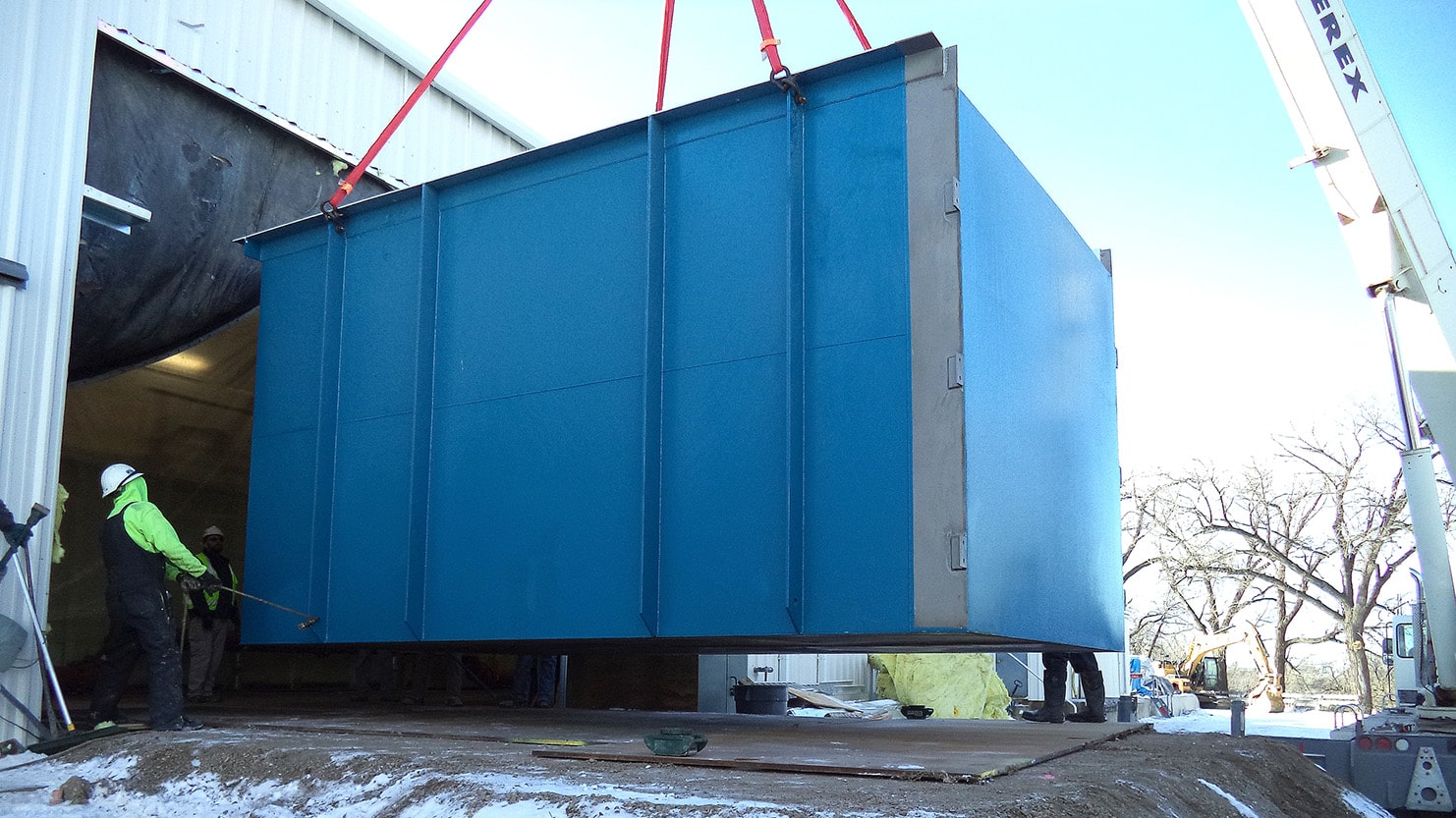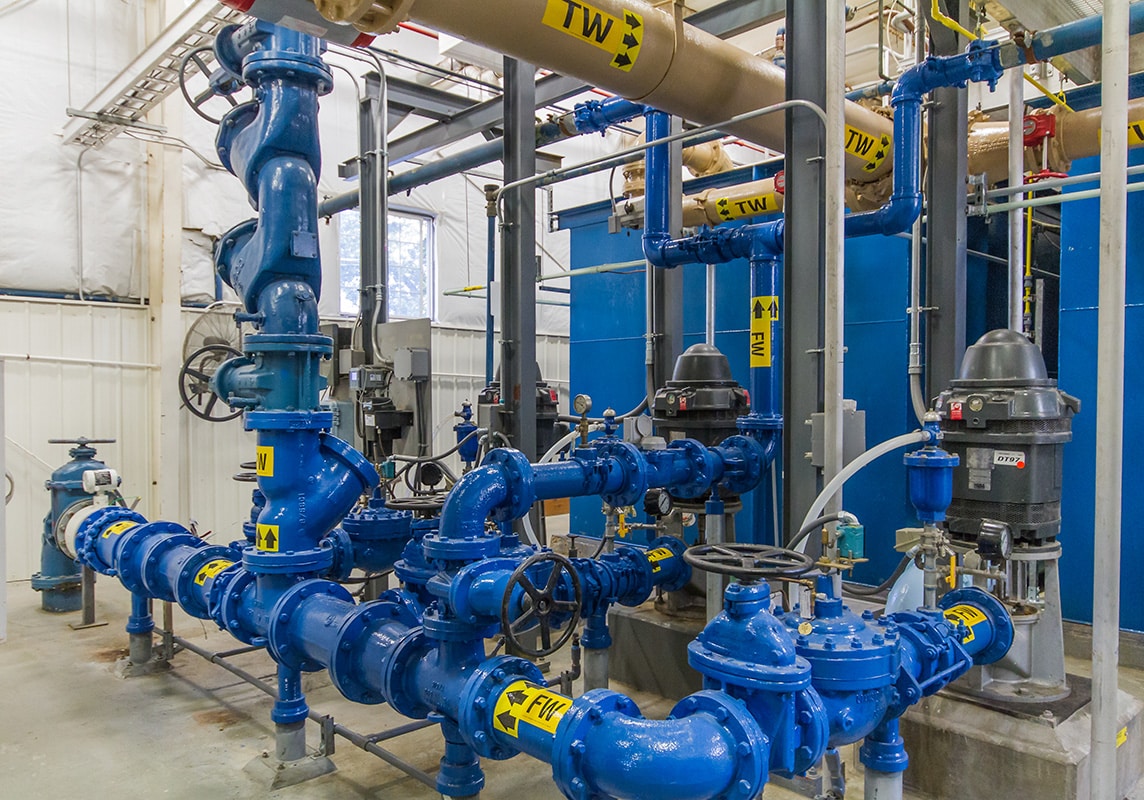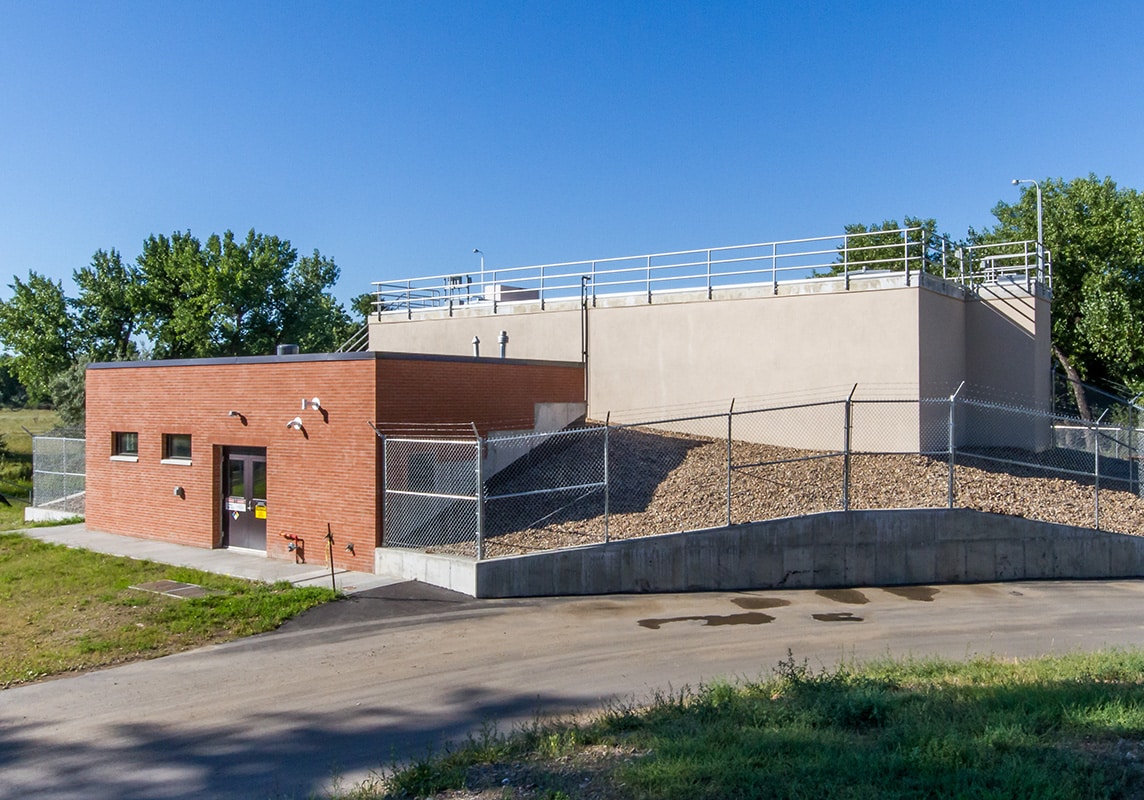
Chinook Water Treatment Plant Improvements
Turbid Water Treatment Solution
The City of Chinook, Montana, is an agricultural community with a population of 1,200 residents. It has used the Milk River for its water supply since the 1930s. The river is also known for its periods of extreme turbidity, heavy sediment, and has recently experienced high levels of organics.
In 2010, the city began having issues with disinfection byproducts (DBPs), equipment reliability, and overall limitations in treatment flexibility due to deteriorating river conditions. Flash turbidity events were common and lasted for weeks. The total organic carbon (TOC) and alkalinity levels began to steadily increase, which made treatment more difficult.
Services and Highlights
-
Engineering design
-
Planning
-
Construction services
-
Jar and pilot testing
-
Raw water pump station to provide more reliable water intake and pumping
-
Powdered activated carbon feed system for more TOC removal and improve taste and odor issues
-
Rapid mixer to ensure adequate coagulant mixing, and provide multiple ports for chemical injection
-
Ultraviolet (UV) disinfection used for giardia inactivation
-
State-of-the-art electrical and plant control system
-
Funding assistance

The 35-year-old facility used two parallel package plant trains consisting of flocculation, settling, and media filtration, followed by chlorine disinfection. Though this was a conventional system but was lacking more robust treatment processes to address the extreme river conditions. As the river’s water quality degraded, it stressed operations, and the city fell out of compliance with DBPs in 2011.
A facility plan was prepared in 2012. Morrison-Maierle’s recommended upgrades included new raw-water pumping, new pre-oxidation basins, replacement of the conventional package plant trains, new chemical feed systems, new UV disinfection, and replacement of the controls.
Due to the complexity and cost of ozone and chlorine dioxide for a small community, pilot testing was implemented in 2014 that focused on pre-oxidation using a readily available chemical, permanganate. Three-hour contact time in a pre-oxidation basin with permanganate showed significantly improved filtration performance, reduced TOC, removed heavy sediment, and provided a buffer for high turbidity periods. Powdered activated carbon further reduced TOC, and ultraviolet (UV) disinfection provided flexibility in reducing chlorine dose, minimizing DBP formation.
Construction was completed in April 2016 that included the construction of the raw water pump station and pre-oxidation basins prior to the package plant trains. The pre-oxidation basins were designed as parallel rectangular clarifiers to consistently remove solids, while also providing contact time for permanganate. The next phase included demolition of one package plant train at a time, installation and commissioning of a new train.



Funding Assistance
Morrison-Maierle’s change management was also a benefit of design and construction. The construction came in under budget, which provided the city with the remaining budget at the end of construction. Working with the funding agencies, Morrison-Maierle, and the city came up with a list of additional items that would provide value to the plant. New chlorine feed equipment, new chemical mixers, a new flow meter, and expanded asphalt paving were included. The project spent all but $1,000 of the $5.5 million funding package on these additional items This shows the benefit of being fiscally aware and pre-planning communications with the design and construction teams.
Construction costs were “creeping” up in the industry, and the team was worried about the final cost estimate prior to bidding. The revised cost estimate showed the project as $1 million higher, or about 25% more than expected. Morrison-Maierle worked hand-in-hand with the city and its funding administrator to find more money. The team ended up receiving another $1 million in grant funds to cover the entire additional cost. Therefore, the loan portion of the project remained the same, and the city’s water rates were not additionally affected.
Related Projects



Four Corners Wastewater Treatment Plant
Four Corners Wastewater Treatment Plant